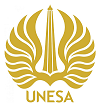Analisis Penerapan Psak 102 Murabahah (Studi Kasus Pada Ksu Bmt Rahmat Syariah Kediri)
DOI:
https://doi.org/10.26740/jaj.v6n1.p17-32Keywords:
Baitul Maal wa Tamwiil, Sharia Accounting, PSAK 102, MurabahahAbstract
Abstract
The purpose of this research is to find out whether the accounting practices which include the recognition, measurement, presentation and disclosure of the murabaha transactions applied to the BMT Rahmat Syariah in accordance with PSAK 102 about accounting murabaha. The research method used is descriptive qualitative approach with this type of case study research. The Unit of analysis in this study is the accounting treatment of murabaha is applied to the BMT Rahmat Syariah. Analytical techniques used in this research is a domain analysis techniques. From the results of the research can be determined three related domains of contract i.e. the beginning of akkadian murabaha, during the process of installment and repayment. Research results can be concluded that BMT Rahmat Syariah in terms of recognition, measurement, presentation and disclosure of early contract deal not in accordance with PSAK 102. During the process of contract, in terms of the measurement of profit murabaha were in accordance with PSAK 102, but in terms of recognition, presentation, and disclosure is not in accordance with PSAK 102. Whereas in the recognition, measurement and disclosure of fines (ta'zir) is in compliance with PSAK 102 only served and which is not in accordance with PSAK 102. At the time of payment of the measurements were in accordance with PSAK 102, however, recognition, representation, and the disclosure is not in accordance with PSAK 102.
References
Arikunto, S., & Pendekatan, P. P. S. (1992). Praktek. Jakarta: Rineka Cipta
Buchori, N, S. (2009). Koperasi Syariah. Sidoarjo: Masmedia Buana Pustaka.
Harahap, S, S. (2010). Akuntansi Perbankan Syari'ah. LPFE Usakti.
Hosen, M,N, dkk. (2008). Lembaga Bisnis Syariah. Versi e-book. Jakarta: Pusat Komunikasi Ekonomi Syariah.
Huda, N., & Heykal, M. (2010). Lembaga keuangan Islam: tinjuan teoretis dan praktis. Kencana.
Indonesia, I. A. (2009). Pernyataan standar akuntansi keuangan. Salemba Empat. Jakarta.
Sarwedhie, A. K., & Suprayogi, N. (2015). Perlakuan Akuntansi Akad Musyarakah Mutanaqisah (Studi Kasus: KPR iB Pada Bank Muamalat Cabang Darmo Surabaya). Jurnal Ekonomi Syariah Teori dan Terapan, 1(6).
Masita, dkk. (2011). Analisis Penerapan Pernyataan Standar Akuntansi Keuangan (PSAK) Nomor 102 (Studi Kasus Pada Pegadaian Syariah Cabang Gunung Sari Balikpapan). Jurnal Penelitian Universitas Mulawarman.
Moleong, L. J. (1999). Metodologi penelitian. Bandung: PT. Remaja Rosda Karya.
Nabila. (2011). Perlakuan Akuntansi Terhadap Pembiayaan Murabahah Pada Bank Syariah Berdasarkan PSAK No. 102 Tentang Akuntansi Murabahah (Studi Kasus Pada Bank BRI Syariah Sidoarjo). Rangkuman Skripsi UPN œVeteran, Jawa Timur.
PINBUK. Tanpa Tahun. Peraturan Dasar dan Contoh AD ART BMT. Jakarta: wasantara net. id.
PINBUK. 1998. Pedoman Cara Pembentukkan BMT. Jakarta: PINBUK.
Ningsih, I. Y. S. (2011). Perlakuan akuntansi murabahah berdasarkan psak 102 pada BMT al-Fath.
Soemitra, A. (2009). Bank dan Lembaga keuangan syariah. Kencana.
Sudarsono, H. 2008. Bank dan Lembaga Keuangan Syariah Edisi Ketiga. Cetakan Pertama. Yogyakarta: Ekonisia.
Sugiyono. (2010). Metode Penelitian Pendidikan. Bandung: Alfabeta.
Suhendi, H. (2009). Strategi Optimalisasi Peran BMT sebagai Penggerak Sektor Usaha Mikro. www.fe.unpad.ac.id (diakses pada 21 Oktober 2013 pukul:16.25).
Taufiqi, N. (2011). Analisis Perlakuan Akuntansi Atas Kesesuaian Penerapan Prinsip Jual Beli Pada Transaksi Murabahah Di PT. BPR Syariah Jabal Nur Berdasarkan PSAK 102. Rangkuman Skripsi STIE Perbanas, Surabaya.
Warren, R,F. (2005). Pengantar Akuntansi I edisi 21. Jakarta: Salemba Empat.
Wiroso. (2011). Akuntansi Transaksi Syariah. Jakarta: Ikatan Akuntan Indonesia.
Yaya, R, dkk. (2009). Akutansi Perbankan Syariah; Teori dan Praktik Kontemporer. Jakarta: Salemba Empat.
Yin, R, K. (2012). Studi Kasus Desain dan Metode. Jakarta. PT. Raja Grafindo Persada.
Downloads
Published
How to Cite
Issue
Section
 Abstract views: 6435
,
Abstract views: 6435
, PDF Downloads: 3738
PDF Downloads: 3738


















